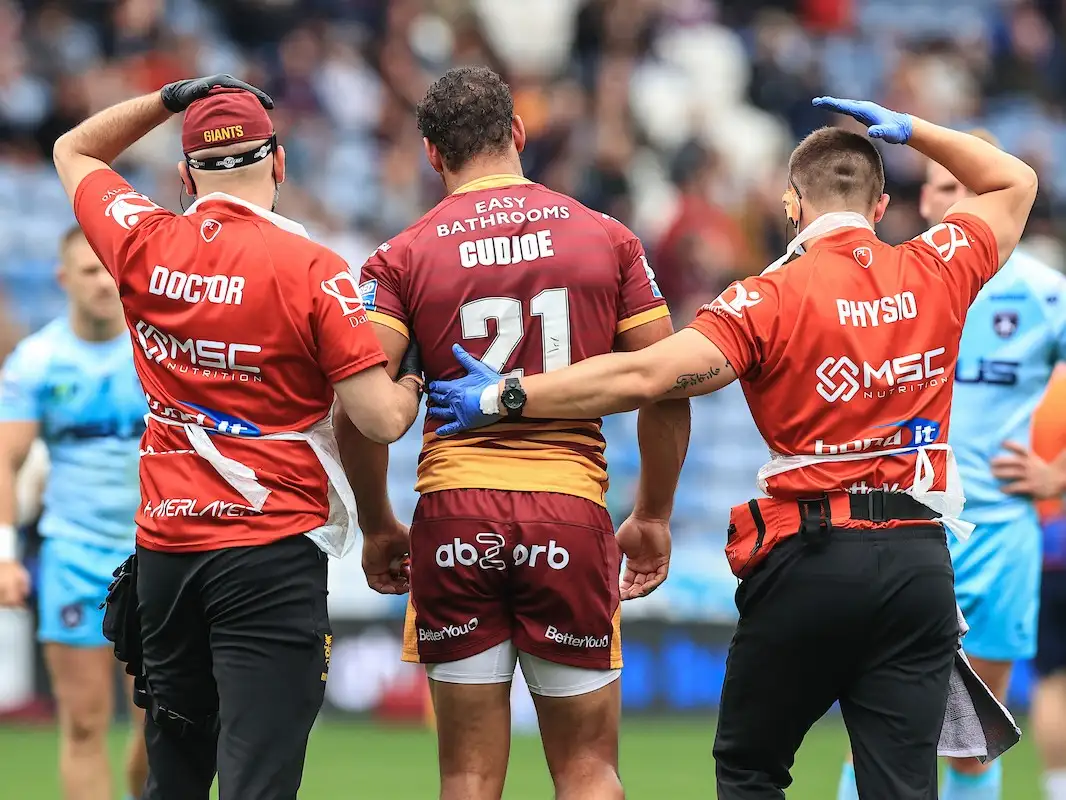Clubs to name extra player in matchday squad as possible law changes discussed

Clubs will name an additional player in their match day squad after the 18th man rules seen at the recent World Cup were adopted by the RFL.
A named 18th man will be able to come on as an interchange player if three players on their team fail a HIA in the same match.
The move is part of the ongoing scientific research and learnings from the impact of concussions and head injuries.
Although no club has suffered three HIA’s in one match based on the current reporting of it, there was a Super League game last season between Hull KR and Catalans which came very close.
However, if more players report non-visible symptoms of concussion as awareness and culture changes, then it is expected to become more common.
The return to play protocol for players who have suffered a concussion has also been increased by a day to 12 days, and there is no way of players accelerating that return. That means players will be guaranteed to miss at least their team’s next match if they fail a HIA.
Possible law changes amidst tackle height storm
While the RFL’s position on the recent storm in rugby union around tackle height remains unchanged, they have revealed that nine law change recommendations have been developed by their head contact working group.
Although the exact details haven’t been revealed, they have been communicated to Super League and academy coaches, match officials and other stakeholders in the game for their feedback.
They will be able to rate if they see the change as important to reduce head acceleration, how easy it will be to implement and if it maintains the integrity of the game.
Any possible law modifications will be trialled in the academy game.
The Rugby Football Union has received widespread criticism following their recent announcement that tackling above the waist will be banned. They have subsequently diluted their approach, and further talks are being had about the exact definition of their new recommendations.
In data shared on a media briefing, the RFL highlighted a total of 196 concussions over the past five seasons within a control sample of 3,143 tackles. In 71% of those instances, it was the tackler who suffered concussion.
The area of the body where contact was made was broken down in to seven sections – head/neck, shoulder, chest, abdomen, shorts, upper leg and lower leg. Clearly, contact with the head/neck carried the greatest risk, with 1.24 concussions per 1000 tackles.
But interestingly in the context of the rugby union changes, concussion was more than twice as likely with impact around the shorts, upper or lower leg, compared to shoulder, chest and abdomen.

There is a significant amount of research being done by the RFL, led by Professor Ben Jones and Laura Fairbank, the RFL’s head of medical and integrity. The Government has set up a concussion inquiry into sport, meaning there is a lot of cross sport working and a strong scientific community working together on reducing head injuries.
Instrumented mouthguards are now being worn, and they are attached to players’ teeth, meaning so-called ‘head accelerations’ can be tracked to show how many break the concussion threshold and to show the exact impact of a tackle.
They hope that will identify the cause of the biggest concussions, reducing the overall number and enabling smaller changes to ensure the game can remain how it is.
At present, there is on average one concussion every two games.
The mouthguards enable researchers to identify the force of impact on every movement or collision in the game, enabling them to map out the data and work towards removing the bigger ‘head accelerations’.
There are plans in place to roll out the instrumented mouthguards across all levels of the game, including wheelchair, PDRL and LDRL.
Recommendations for the community game are due to be made later this month as part of Government guidelines for all sports.
Opinion
The RFL are often subject to criticism, but one area they can’t be criticised is in their approach to concussion and player welfare. The scientific research and data being generated surrounding concussion and head contacts is astounding, and can only put the sport in the best possible place for dealing with a growing issue in a way that will best protect the integrity of the sport.
Nobody wants to see wholesale changes to the sport we all love. However, it is clear that some tweaks may well be needed to ensure protection of players moving forward. By utilising this data, and by raising awareness amongst players of non-visible symptoms, perhaps the changes can be far less drastic than they might have been without it.
Concussions are a reality of the sport. By trying to remove the cause of them, it means less players missing games. A player does not want to suffer a HIA and sit out the rest of that match and the following week; nor do they want the long-term consequences of multiple concussions. While concussions won’t be eradicated, minimising them as much as possible has to be a priority and it is.
READ NEXT: RFL reveal exciting national pyramid for growing women’s game